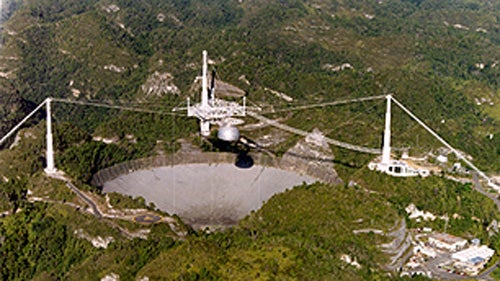Three citizen scientists — a German and an American couple — have discovered a new radio pulsar hidden in data gathered by the Arecibo Observatory in Puerto Rico. This is the first deep-space discovery by Einstein@Home, which uses donated time from the home and office computers of 250,000 volunteers from 192 countries.
Chris and Helen Colvin, of Ames, Iowa, and Daniel Gebhardt of Universität Mainz, Musikinformatik, Germany, are credited with the discovery. Their computers, along with 500,000 others from around the world, analyze data for Einstein@Home — on average, donors contribute about two computers each.
The new pulsar, PSR J2007+2722, is a neutron star that rotates 41 times per second. It is in the Milky Way, approximately 17,000 light-years from Earth in the constellation Vulpecula. Unlike most pulsars that spin as quickly and steadily, PSR J2007+2722 sits alone in space, and has no orbiting companion star. Astronomers consider it especially interesting because it is likely a recycled pulsar that lost its companion. However, they can’t rule out that it may be a young pulsar born with a lower-than-usual magnetic field.
Einstein@Home, based at the Center for Gravitation and Cosmology at the University of Wisconsin-Milwaukee (UWM), and at the Max Planck Institute for Gravitational Physics in Hannover, Germany, has been searching for gravitational waves in data from the U.S. LIGO Observatory in Pasadena, California, since 2005. Starting in March 2009, Einstein@Home also began searching for signals from radio pulsars in astronomical observations from the Arecibo Observatory. Arecibo is the world’s largest and most sensitive radio telescope, and it is managed by Cornell University. About one-third of Einstein@Home’s computing capacity is used to search Arecibo data.
“This is a thrilling moment for Einstein@Home and our volunteers,” said Bruce Allen from the Max Planck Institute for Gravitation Physics and adjunct professor of at UWM. “It proves that public participation can discover new things in our universe. I hope it inspires more people to join us to help find other secrets hidden in the data.”










